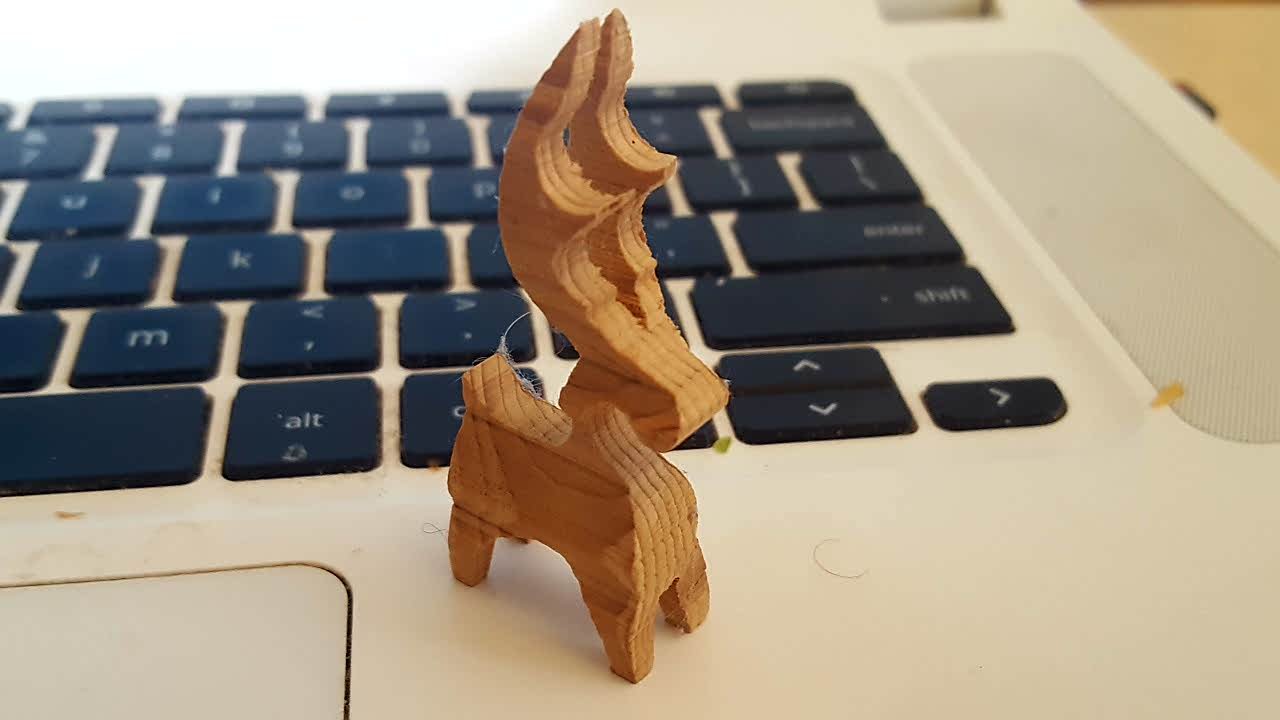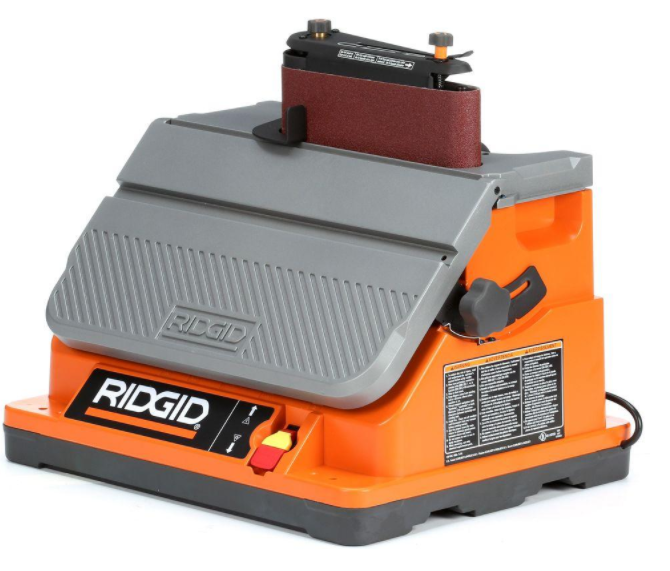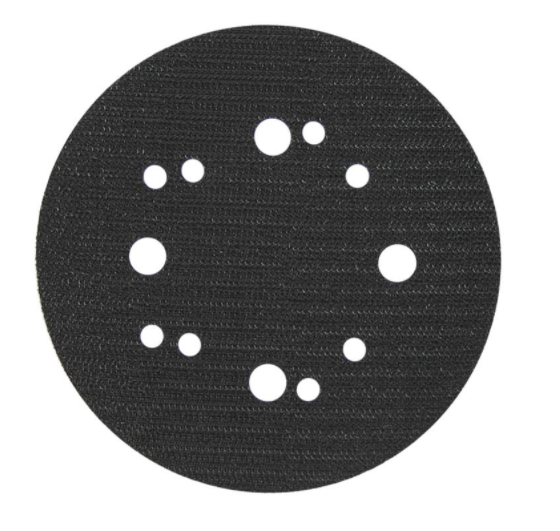
Bob Blarney
Members-
Posts
467 -
Joined
-
Last visited
Content Type
Profiles
Forums
Gallery
Events
Everything posted by Bob Blarney
-
《DIY tools for personal use》Sand disc
Bob Blarney replied to Bitao's topic in Modeling tools and Workshop Equipment
very fine workmanship there -
I'm a big fan of bandsaws, My remarks may not be fully applicable to your needs (a 14" with 12" depth of cut, and a 12" with a 6" depth of cut. ), but I think a couple of observations might be useful to you. I watched the sales video of the Axminister AC1400B and read through the manual. It appears to be a decently built machine for the price ($225USD) and the manual is well written . But I'm skeptical that it could properly tension a 13mm blade - that's a bit difficult even on my 1940s-50s era 14" Delta with a cast iron frame. Insufficient blade tension will be manifested by bowed and wandering cutting. I think the standard 6mm/6TPI is appropriate, or at most possibly an 8mm blade would be ok (By the way, one rule of thumb is that 3 or 4 teeth should be in the wood when cutting, although an additional 1-2 teeth won't be problem if the rate is slow enough to eject the dust from the kerf.) Other than that, perhaps modern blade metallurgy has improved the flexibility of bandsaw blades. In earlier times, blades broke quite often on saws with less than 12" wheels. Finally, if the blade tension, tracking, and guides are properly set, then it should be possible split a pencil line without a fence or miter gauge. Indeed, very fine work can be done - look at this 6cm tall reindeer that Alex Snodgrass (see above) cut out freehand for my young daughter, all the while conversing with the audience at a woodworking products show.
-
Rare complete ship's curves set on eBay
Bob Blarney replied to Bob Cleek's topic in Modeling tools and Workshop Equipment
Ah, but there are people who teach about how to use it. Here's the equipment list https://www.i3detroit.org/wiki/Category:Equipment -
Rare complete ship's curves set on eBay
Bob Blarney replied to Bob Cleek's topic in Modeling tools and Workshop Equipment
Maybe I'll take cruise over to i3Detroit.org. It's a art/craft/maker community with just about every tool you could think of, and $50/month gets 24/7 access to it all. But the real value is in the people who participate - every kind of artists, machinists, engineers, designers, you name it. Detroit is still a technological powerhouse -
Rare complete ship's curves set on eBay
Bob Blarney replied to Bob Cleek's topic in Modeling tools and Workshop Equipment
Hmm, make a computer scan of the complete set, and then a person with a CNC can make a set for you lickety split, in any size you want. By the way, I did a very fine sanding on one side of an inexpensive office supply set. This allows me to mark spots along the edge with a pencil if I need to duplicate a curve later or flip it over to trace a matching chiral curve. The pencil mark can be removed with an ordinary eraser. -
if any other sizes are needed, check out: www.blocklayer.com There are also many other items of interest there.
-
Yep, they're handy. Clamps can be cut from PVC pipe - slice off rings like baloney and cut the ring to make an opening. The clamping pressure can be adjusted by choosing the diameter of the pipe, the width of ring slice, and the segment cut from the ring (if more than a simple cut).
-
Bench Top 5" Disk Sander
Bob Blarney replied to DocBlake's topic in Modeling tools and Workshop Equipment
Unfortunately that is not advisable or possible. These sanders have induction motors. A 'universal' motor can be controlled by HF router controller ($20). Besides that, dimmers are intended for resistive loads such as incandescent lamps or heating blankets. -
Bench Top 5" Disk Sander
Bob Blarney replied to DocBlake's topic in Modeling tools and Workshop Equipment
A 2x72 is an excellent machine for making knives, but a 1x30 will take away the prize for everyday work in a home/hobby shop. If I really wanted to slow the 1x30 down without spending money for a new motor, then I would make a smaller drive wheel. But doing that might require the addition of another idler wheel to take up the slack. But most hobbyists aren't inclined to make or modify tools - they're interested in pursuing the detailed work of their hobby. -
Bench Top 5" Disk Sander
Bob Blarney replied to DocBlake's topic in Modeling tools and Workshop Equipment
A strip sander can be very useful, not only for your hobby. I used mine to sharpen knives, chisels, and plane irons yesterday - scalpel sharp. You can buy a 'knifemaking kit' at woodworkingshop.com for about $40 that includes a large selection of belts and a few other items. A tune-up and maybe a couple of easy modifications might be a good idea. There is guy who sharpens kitchen knives for a living using these, and he has made a couple of videos about how he tunes his strip sanders. One particular thing he mentions is belt speed, and it may be worth the extra $20 to buy the variable speed RIKON 1in. x 30in. Belt / 6in. Disc Sander. Another alternative is the standard combo 4x36 belt sander & 6" disc sander. The cutlery guy reviewed several 1x30 machines here, bearing in mind that he use them for cutlery sharpening: -
Bench Top 5" Disk Sander
Bob Blarney replied to DocBlake's topic in Modeling tools and Workshop Equipment
This might be a useful idea for those who have a vibrating pad sander. It could handle larger pieces: https://books.google.com/books?id=fdQDAAAAMBAJ&lpg=PP1&dq=strip sander&pg=PA128#v=onepage&q=strip sander&f=false -
Bench Top 5" Disk Sander
Bob Blarney replied to DocBlake's topic in Modeling tools and Workshop Equipment
-
Bench Top 5" Disk Sander
Bob Blarney replied to DocBlake's topic in Modeling tools and Workshop Equipment
Or a vertical strip sander But the sander that I use most is this one. by far. It's possible to make accessory fixtures that accommodate many needs. https://www.homedepot.com/p/RIDGID-Oscillating-Edge-Belt-Spindle-Sander-EB4424/100061671 -
I think you are over-thinking this. As Wefalck wrote above, just keep a set of bits and try them out to see if they fit the screw. With further experience, usually you will recognize the necessary size instantly. Except for rare instances, the screw size/diameter determines the size of the recess, and therefore the bit size.
-
Bench Top 5" Disk Sander
Bob Blarney replied to DocBlake's topic in Modeling tools and Workshop Equipment
Unfortunately, it would be difficult with such a small sander. An alternative would be a strip sander, or a drill press 'Robo-sander' However, upon closer inspection of the pictures from the Menards ad, I don't see a bump on the motor's case that indicates the presence of a starter capacitor. Thus the motor can possibly (likely) be regulated with an inexpensive 'router' speed controller, available at Menards or Harbor Freight for less than $20. https://www.menards.com/main/tools/power-tools/routers/router-speed-control/80820/p-1444421810442-c-10087.htm Also, a good place to buy abrasives is Klingspor's woodworking store. Here's a 50 disc sampler ranging from 60-400 grit (5 of each grit) https://www.woodworkingshop.com/product/sam5x8/ -
2 mm screws : Phillips PH000, PH00 (small electronics) 3 mm screws : Phillips PH0 (small electronics) 4 mm screws : Phillips PH1 (common household appliance items) 5+ mm screws : Phillips PH 2 (common household appliances, construction, automotive) large screws : Phillips PH 3 (has a blunt tip, and is not so common) Generally, the 'PH' does not appear on the screwdriver handles. There are also Robertson (Square) Bits the most common are #1 (smaller), #2 medium (very common), and there are smaller and larger size that I don't usually see Bitte, hier anschauen: https://www.mcmaster.com/metric-hex-bits
-
Bench Top 5" Disk Sander
Bob Blarney replied to DocBlake's topic in Modeling tools and Workshop Equipment
There is something else that you might consider. While the motor RPM are constant, the paper's surface velocity (inches/min) - and therefore the sanding rate - is greatest at the outer edge of the disc (5" x pi x RPM). As a piece of stock is moved towards the center of the disc, the surface velocity drops, and becomes zero at the dead center of the disc. So it is possible to alter the rate of sanding by positioning the piece. -
Bench Top 5" Disk Sander
Bob Blarney replied to DocBlake's topic in Modeling tools and Workshop Equipment
Nevermind! -
Bench Top 5" Disk Sander
Bob Blarney replied to DocBlake's topic in Modeling tools and Workshop Equipment
I believe a hook & loop (Velcro) conversion kit might be of interest to you. This is a Diablo 5" Sandnet Connection Pad for quick changeout of abrasive discs. -
Twisting blade on MicroMark saw?
Bob Blarney replied to Rcboater Bill's topic in Modeling tools and Workshop Equipment
I think you may be correct about a thin blade having a tendency to warp as it heats up, and if the blade is dull then heat would build up much faster. -
I think a height-adjustable table is a great idea, especially for fine intricate work. While there's nothing wrong with doing things the hard way, it's just not as much fun.
-
Twisting blade on MicroMark saw?
Bob Blarney replied to Rcboater Bill's topic in Modeling tools and Workshop Equipment
Hmm, a mystery. I wonder if the teeth on one side of the blade are dull. The usual way to check alignment is to mark a tooth at the table surface near you with a Sharpie and measure the distance to the fence. Then move that particular tooth to the back and measure again. The measurements should match perfectly. If they don't then adjust the fence, and check again at different distances from the blade. I suppose there's also the possibility of a bent arbor shaft, but I think that would be less likely. -
Rockwell Bladerunner
Bob Blarney replied to selittle's topic in Modeling tools and Workshop Equipment
Yep, it's basically a sabersaw mounted upsided down. It does have a few nice touches such as the blade replacement feature and dust extraction, but without an upper guide bearing I think the quality of cut won't be very fine. For modelers, I think a scrollsaw would be a better choice. -
Workshop Essentials - Favorite Features
Bob Blarney replied to Justin P.'s topic in Modeling tools and Workshop Equipment
By the way, circuit breakers protect your building's wiring, >not your body<. Which brings us to the idea of installing GFI receptacles. So long as you're in a dry location, then GFI receptacles are not needed - the National Electrical Code only requires them in damp locations or where a plumbing fixture is within an arm's reach of the outlet. It wouldn't hurt to install one, though. -
Workshop Essentials - Favorite Features
Bob Blarney replied to Justin P.'s topic in Modeling tools and Workshop Equipment
Hello again, I just remembered this outlet strip that has individual switches for each outlet. I use this type of strip for my stationary power tools for safety reasons. I always keep two switches between the power source and the tool, to prevent energizing the tool accidentally while I'm setting it up or changing blades. So when I'm ready to make a cut, I first switch on the outlet on the strip, and then go to the machine and flip its switch to energize the tool. https://www.amazon.com/Tripp-Lite-Individually-Controlled-TLP76MSG/dp/B0068LACFI
About us
Modelshipworld - Advancing Ship Modeling through Research
SSL Secured
Your security is important for us so this Website is SSL-Secured
NRG Mailing Address
Nautical Research Guild
237 South Lincoln Street
Westmont IL, 60559-1917
Model Ship World ® and the MSW logo are Registered Trademarks, and belong to the Nautical Research Guild (United States Patent and Trademark Office: No. 6,929,264 & No. 6,929,274, registered Dec. 20, 2022)
Helpful Links
About the NRG
If you enjoy building ship models that are historically accurate as well as beautiful, then The Nautical Research Guild (NRG) is just right for you.
The Guild is a non-profit educational organization whose mission is to “Advance Ship Modeling Through Research”. We provide support to our members in their efforts to raise the quality of their model ships.
The Nautical Research Guild has published our world-renowned quarterly magazine, The Nautical Research Journal, since 1955. The pages of the Journal are full of articles by accomplished ship modelers who show you how they create those exquisite details on their models, and by maritime historians who show you the correct details to build. The Journal is available in both print and digital editions. Go to the NRG web site (www.thenrg.org) to download a complimentary digital copy of the Journal. The NRG also publishes plan sets, books and compilations of back issues of the Journal and the former Ships in Scale and Model Ship Builder magazines.




